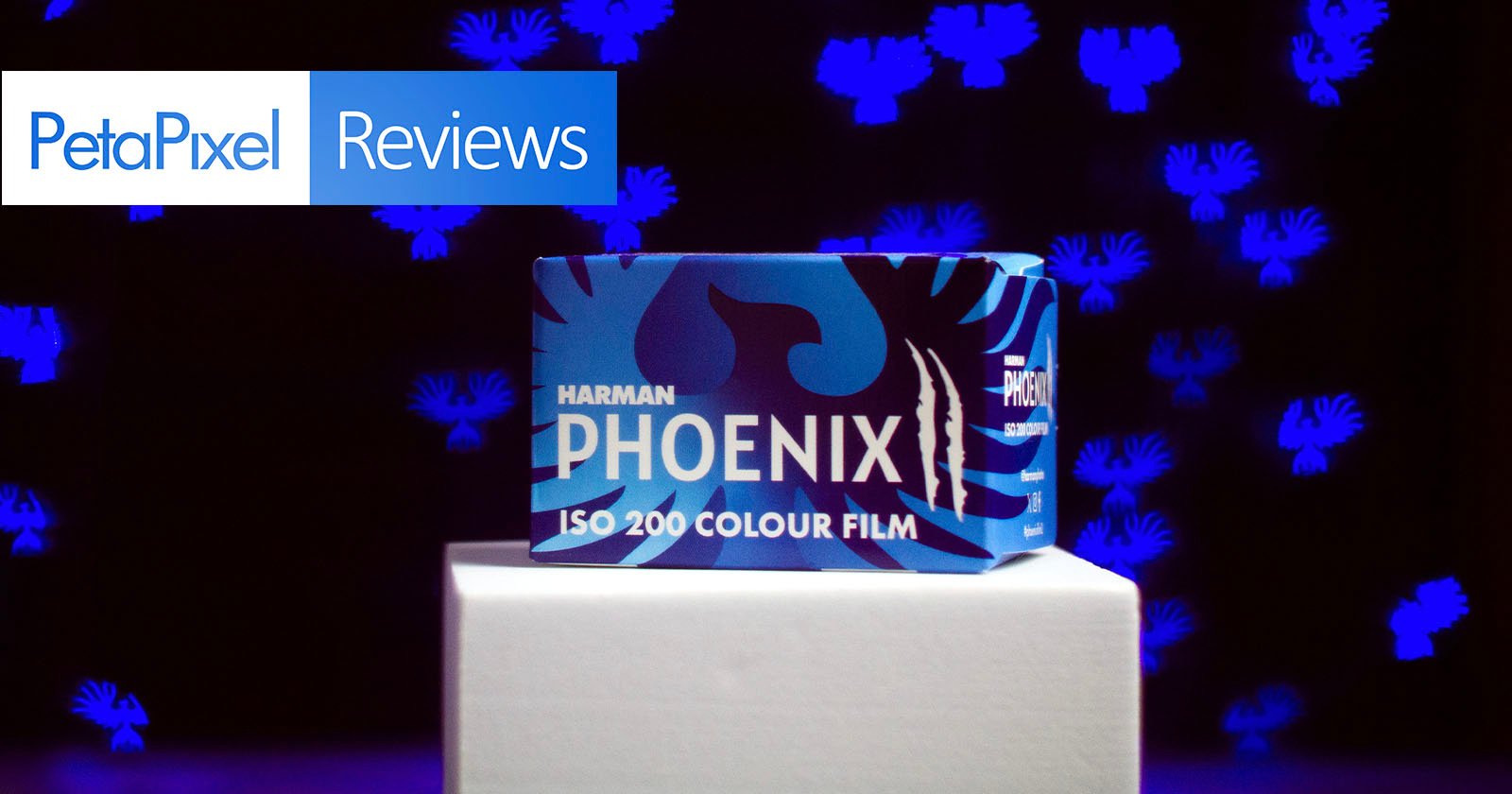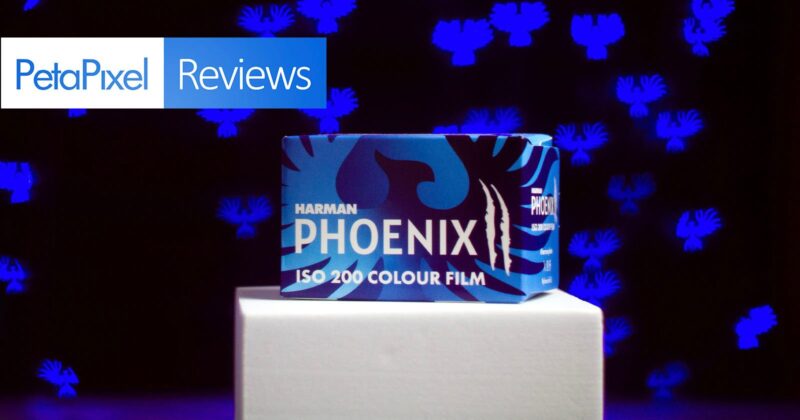
Harman is on a roll, expanding its support for analog photographers with multiple new film emulsions this year. Right on the heels of Kentmere Pan 200, its new Phoenix II film stock replaces the more experimental original Phoenix and improves on it in multiple areas. That said, it might not be for everyone.
Note: I shot two rolls of Phoenix II, but, unfortunately, one of those rolls came out dramatically underexposed (whether this was an issue with my Bessa R2a or something else, we’re still investigating). That means my sample images are of just one morning in a Portland park, so I also included a fair number of photos taken by Hilary Freed, who is a friend of mine and who also works for Harman. She supplied her samples so that you have a better idea of what to expect out of this film, but the opinions in this story are entirely mine.
Harman Phoenix II Review: What Is It?
Harman Phoenix is what I would best describe as a “wild” experimental film. While it was possible to get some relatively normal-looking photos out of that limited edition film, it could start to run away from you pretty quickly, and the dynamic range — especially in the highlights — was pretty weak. It was those areas that Harman actively adjusted the successor, promising much better dynamic range, better color, and more consistency.
 This is a photo taken on the original Harman Phoenix film, shot on the Rollei 35AF by Chris Niccolls.
This is a photo taken on the original Harman Phoenix film, shot on the Rollei 35AF by Chris Niccolls.
That’s where Phoenix II comes in. The new C41 process ISO 200 film was made by taking feedback from photographers and learning from the process of making the original Phoenix with the promise of better color reproduction, better-controlled contrast, less grain, and increased sharpness. Looking at my results, I agree with most of those talking points, but there is still some room to improve.
Harman Phoenix II Review: How It Shoots
I shot Phoenix II on a Voigtlander Bessa R2a paired with the 35mm f/1.2 Nokton (with poor results, as noted above) as well as a Nikon FM2 with a 135mm f/2.8 lens (with great results). Looking at my photos and comparing them to those my friend Hilary got (which she shot on a Mamiya 6), I can say that I’m a much bigger fan of Phoenix II versus its predecessor. There are some important differences between 35mm and 120 format, though, which are worth pointing out.
 Shot on 35mm with a Nikon FM2 and 135mm f/2.8.
Shot on 35mm with a Nikon FM2 and 135mm f/2.8.
First, let’s talk about the good news: the promise of better color, contrast, and increased sharpness is evident. Color looks fantastic and in many cases will lean towards pastels more than vivid, high-saturation. Given that there are plenty of color films available that will give you a punchy, bright, saturated color, I’m really pleased that we have something a bit more subdued that can grant images a different vibe.
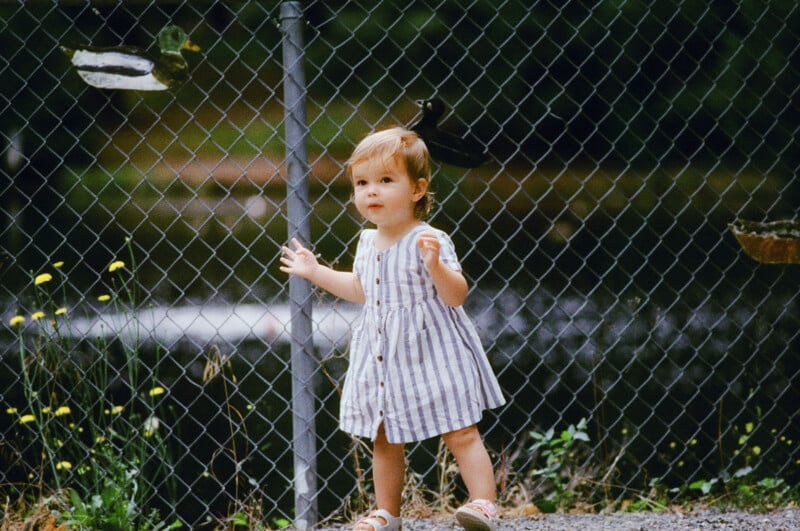 Shot on 35mm with a Nikon FM2 and 135mm f/2.8.
Shot on 35mm with a Nikon FM2 and 135mm f/2.8.  Shot on 35mm with a Nikon FM2 and 135mm f/2.8.
Shot on 35mm with a Nikon FM2 and 135mm f/2.8.
Contrast is also very nice. It’s not too harsh to where shadows get crushed, but just enough to give a nice visual depth to the transition between highlights and darks. Speaking of highlights, I am a big fan of the improved dynamic range of Phoenix II because it results in really gorgeously rendered highlights that are bright but still full of detail. Hair, for example, looks especially nice as it almost glows when light hits it. It’s very pretty.
 Shot on 120 format with a Mamiya 6. Photo by Hilary Freed
Shot on 120 format with a Mamiya 6. Photo by Hilary Freed
There is range, too. Looking at my photos shot on a warm, overcast Portland morning with a mix of brights and darks, I’m really happy with the range. In Hilary’s landscape shots captured in the bright sun of New Mexico, you can see the film can retain detail in the clouds while also rendering the shadows cast by rocks or buildings with detail, too. It’s not infinite dynamic range by any means, but it is so much more than the original Phoenix was giving and is plenty for a film photographer to work with.
 Shot on 120 format with a Mamiya 6. Photo by Hilary Freed
Shot on 120 format with a Mamiya 6. Photo by Hilary Freed
Sharpness is better, but it is especially nice on 120. Subjects are clear and crisp and in medium format, some of the shots look so clean, you could convince some folks that they were shot on digital. 35mm has that sharpness, but the grain profile of Phoenix II is a lot more visible on the smaller format and can get in the way of visible sharpness.
That’s probably the best segue to talking about the largest drawback of the film when it comes to 35mm. While it’s significantly less evident on 120, the grain profile of Phoenix II is what I can best describe as “crunchy.”
 Shot on 35mm with a Nikon FM2 and 135mm f/2.8.
Shot on 35mm with a Nikon FM2 and 135mm f/2.8.  The best way I can describe the grain profile of Phoenix II is “crunchy.”
The best way I can describe the grain profile of Phoenix II is “crunchy.”
Looking closely at my scans, if a subject is a small enough percentage of the frame, detail gets lost pretty quickly in a frenetic sea of blocky, almost digital-looking grain. This is not an easy film to scan, despite Harman’s promises to the contrary, and there will be different results depending on the process. My rolls were scanned using a high-end drum scanner at Blue Moon Camera and Machine, while Hilary’s were scanned at home with a Negative Supply system and a Sony a7 IV (and processed with Negative Lab Pro).
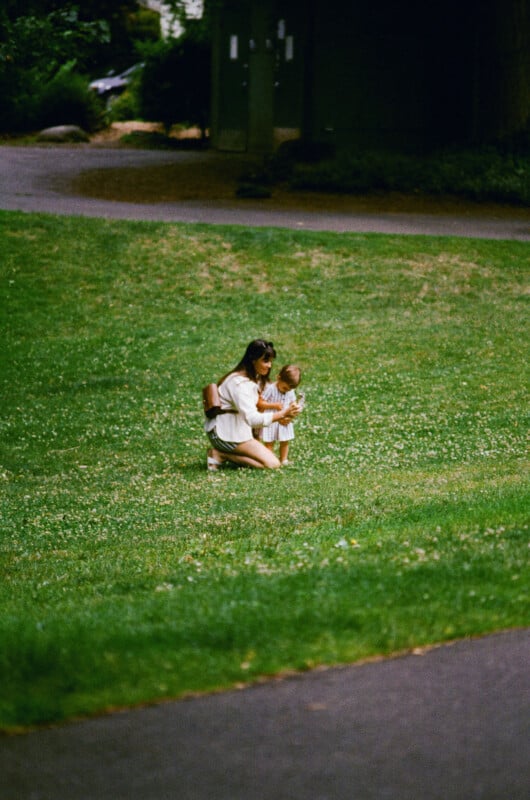 Shot on 35mm with a Nikon FM2 and 135mm f/2.8. Notice the subject detail is getting lost in the grain.
Shot on 35mm with a Nikon FM2 and 135mm f/2.8. Notice the subject detail is getting lost in the grain.
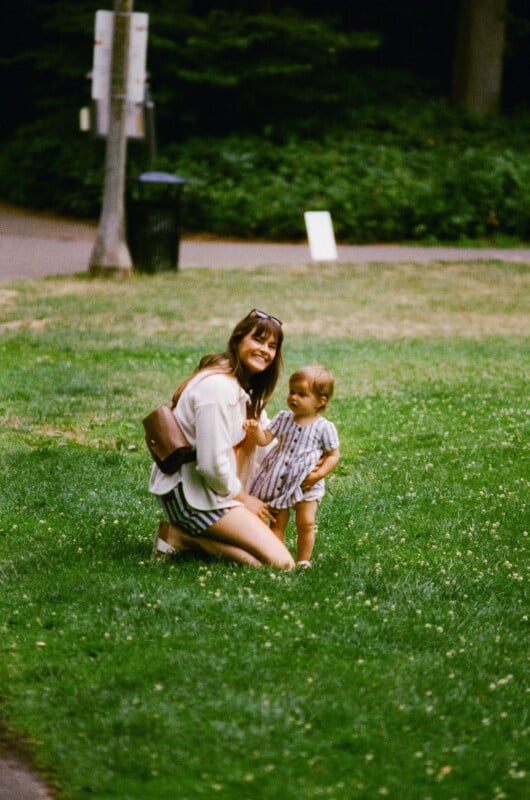 Shot on 35mm with a Nikon FM2 and 135mm f/2.8.
Shot on 35mm with a Nikon FM2 and 135mm f/2.8.
If you are looking for a really clean color film, Phoenix II isn’t it. You’d be better served with Kodak Gold or Ektar 100 on the C41 side or Provia and Velvia on the slide film side. Looping back to the color for a moment, I think Phoenix II has a lot in common with Velvia’s tones but with significantly more grain in 35mm. If you’re shooting 120, Phoenix II might be a nice alternative to Velvia, given how much more affordable it is (and how much more dynamic range Phoenix II will provide).
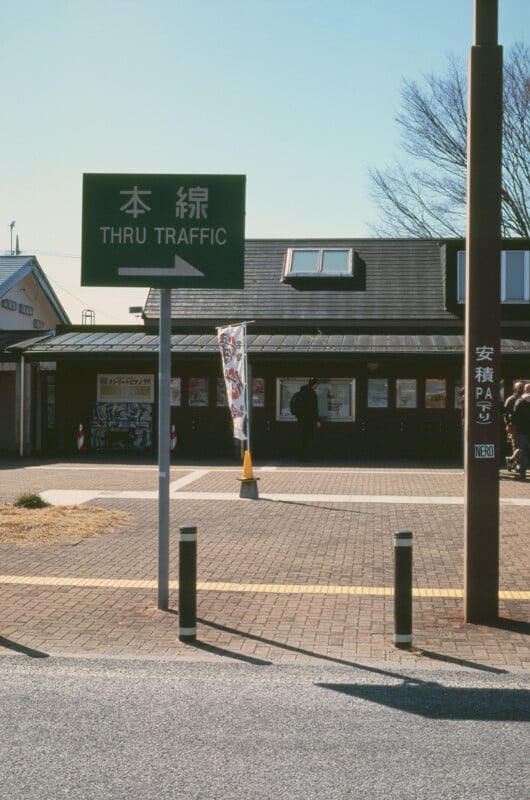 This is a photo I shot on my Bessa R2a on Velvia 100, as a comparison.
This is a photo I shot on my Bessa R2a on Velvia 100, as a comparison.
I included the photo above to give an example of the similarity in tones that you can get between Velvia 100 and Phoenix II. Phoenix II doesn’t always lean this far into the pastels and will sometimes give you a lot more saturation with overcast skies like I had, but you can see there are similar vibes to what Hilary’s photos in New Mexico bring when you’re looking at full-sun, bright days.
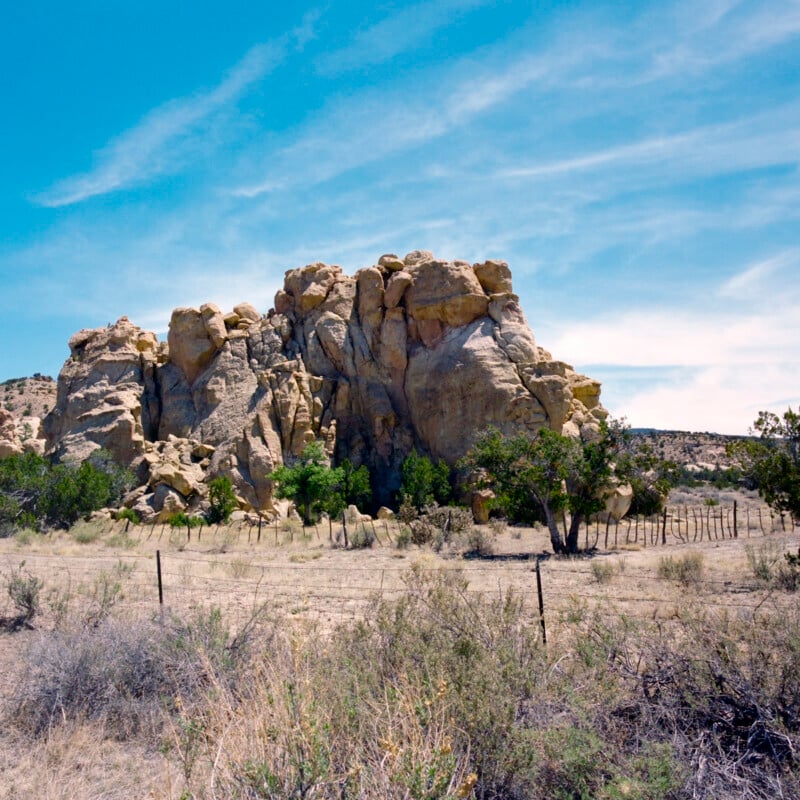 Shot on 120 format with a Mamiya 6. Photo by Hilary Freed
Shot on 120 format with a Mamiya 6. Photo by Hilary Freed 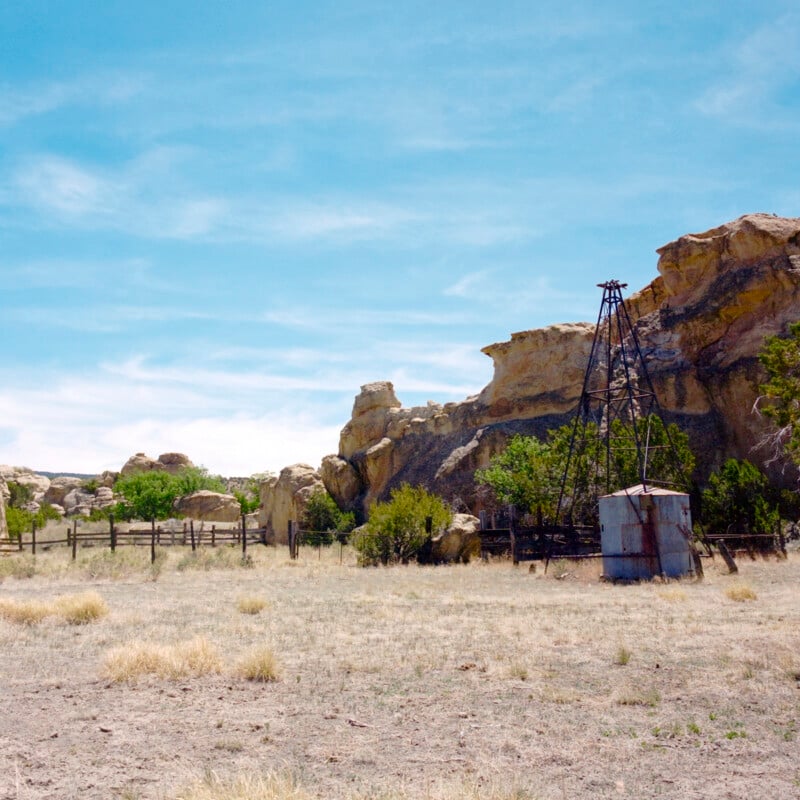 Shot on 120 format with a Mamiya 6. Photo by Hilary Freed
Shot on 120 format with a Mamiya 6. Photo by Hilary Freed
One last note: while the dynamic range of Phoenix II is better, it’s susceptible to losing all of its character if a photo is underexposed. As mentioned, I had an issue with my Bessa R2a that resulted in an entire roll getting a couple of stops underexposed. While the highlights were retained, the whole roll’s color shifted significantly, resulting in an odd mix of brown and muddy green.
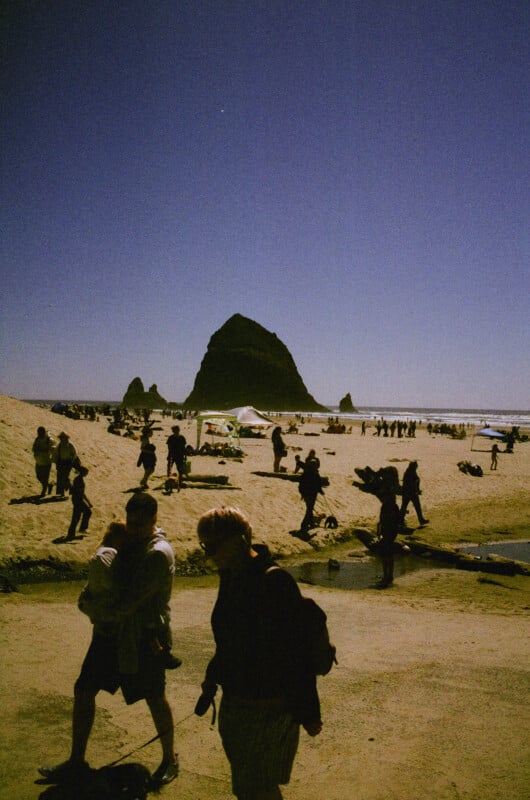 When I composed this, I was going for a “Working Man’s Slim Aarons” sort of thing, and unfortunately my camera issue resulted in this being irrecoverably underexposed. Alas.
When I composed this, I was going for a “Working Man’s Slim Aarons” sort of thing, and unfortunately my camera issue resulted in this being irrecoverably underexposed. Alas. 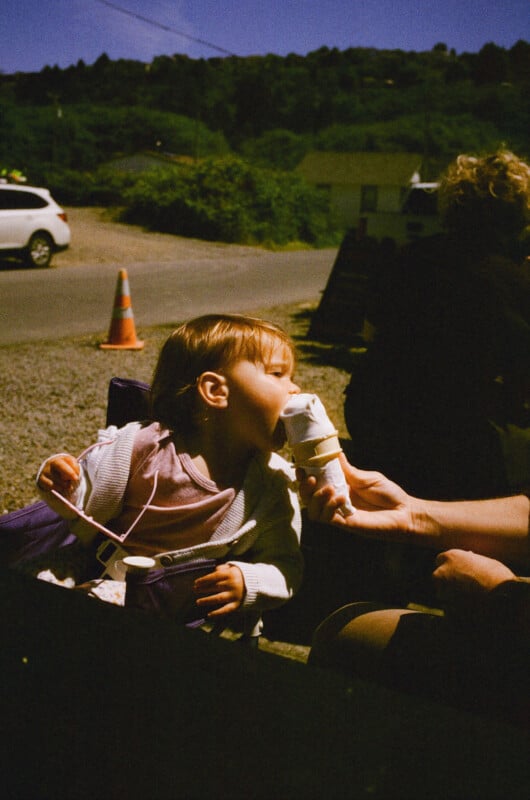 Underexposed Phoenix II.
Underexposed Phoenix II.  Underexposed Phoenix II. Harman Phoenix II is Great on 120
Underexposed Phoenix II. Harman Phoenix II is Great on 120
While Harman’s latest black and white film, Kentmere Pan 200, was fantastic in both 35mm and 120, I spoke to a few photographers in Portland who say that it’s significantly more impressive (given the low asking price) in medium format. That seems to be a consistent theme for Harman right now, as Phoenix II is a much better 120 film than a 35mm film. It’s still fun, but the $14 per roll asking price might be a smidge high given I just don’t love the grain profile on the smaller format.
 Shot on 35mm with a Nikon FM2 and 135mm f/2.8.
Shot on 35mm with a Nikon FM2 and 135mm f/2.8.  Shot on 120 format with a Mamiya 6. Photo by Hilary Freed
Shot on 120 format with a Mamiya 6. Photo by Hilary Freed  Shot on 120 format with a Mamiya 6. Photo by Hilary Freed
Shot on 120 format with a Mamiya 6. Photo by Hilary Freed
If you’re a medium format photographer, however, I think the $12 roll of 120 is well-priced given the alternatives, and the results can mimic film that is significantly more expensive.
Are There Alternatives?
I mentioned that Fujifilm Velvia 100 has a lot in common with the pastel tones of Phoenix II, but it’s not a viable one given its outrageously high price and extreme rarity, especially in the United States and even more so in 120. Kodak Ultra Max and Gold are other options, but they will lean more towards the saturated side in more lighting conditions than Phoenix II tends to. Fujifilm 200 is another widely available option, but its color rendition is nothing like Phoenix II.
All of these alternative films have smaller grain profiles and a sharper final image — especially in 35mm — so it really depends on what you are looking for.
 Shot on 35mm with a Nikon FM2 and 135mm f/2.8.
Shot on 35mm with a Nikon FM2 and 135mm f/2.8.  Shot on 120 format with a Mamiya 6. Photo by Hilary Freed
Shot on 120 format with a Mamiya 6. Photo by Hilary Freed  Shot on 120 format with a Mamiya 6. Photo by Hilary Freed Should You Buy It?
Shot on 120 format with a Mamiya 6. Photo by Hilary Freed Should You Buy It?
In 120 format, yes, absolutely. I’m leaning more on the “maybe” when it comes to 35mm, given that this grain profile won’t appeal to everyone.
Image credits: Header photo via Harman. All other photos that are not individually credited by Jaron Schneider.
